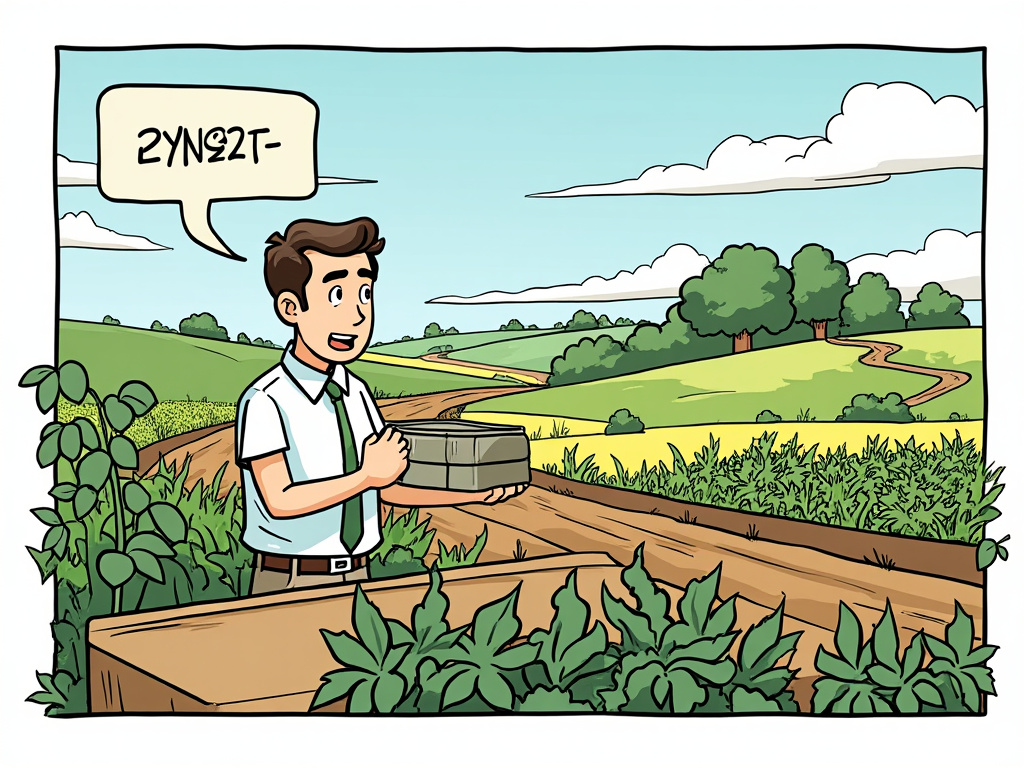
Cultivating Wealth: Strategic Investments in Agribusiness and Wine Production
Reading time: 12 minutes
Table of Contents
- Introduction: The Growing Appeal of Agricultural Investments
- The Current Market Landscape
- Investment Strategies and Entry Points
- Understanding Risk Factors
- Case Studies: Success Stories and Lessons Learned
- Financial Considerations and ROI Analysis
- Technological Innovation and Sustainability
- Your Next Harvest: Strategic Positioning for Long-term Returns
- Frequently Asked Questions
Introduction: The Growing Appeal of Agricultural Investments
Feeling uncertain about traditional investment vehicles in today’s volatile market? You’re not alone. While tech stocks fluctuate wildly and real estate markets cool in many regions, agricultural investments—particularly in wine production—are gaining traction among savvy investors seeking both stability and growth potential.
Agricultural investments represent one of humanity’s oldest wealth-building strategies, yet they’ve evolved dramatically to meet modern portfolio needs. Today’s agribusiness opportunities blend timeless value with cutting-edge innovation, creating a compelling case for allocation within diversified investment approaches.
Let’s cut to the chase: The global agricultural market is projected to reach $15.3 trillion by 2030, with premium wine production representing one of its most lucrative segments. But success in this space isn’t about simply buying land and hoping for the best—it’s about strategic positioning, understanding market dynamics, and leveraging emerging technologies to maximize returns while minimizing risk exposure.
In this comprehensive guide, we’ll explore why seasoned investors are increasingly turning toward vineyards and agricultural operations, how to evaluate these unique opportunities, and practical strategies for entering this distinctive investment landscape.
The Current Market Landscape
Global Trends Reshaping Agribusiness
The agricultural investment landscape is undergoing fundamental transformation, creating both challenges and unprecedented opportunities for investors willing to look beyond conventional assets.
According to the Food and Agriculture Organization, global food production must increase by 70% by 2050 to feed the world’s growing population. This demographic pressure creates substantial long-term demand stability—a rare quality in today’s investment environment. Meanwhile, the middle class expansion in emerging markets is driving increased consumption of premium agricultural products, particularly wines and specialty crops.
As Dr. Sarah Chen, agricultural economist at Cornell University, explains: “We’re witnessing a perfect storm of factors driving agricultural investment appeal. Supply constraints from climate change and land limitations meet expanding demand from population growth and changing consumption patterns. This fundamental imbalance creates persistent upward pressure on valuations for productive agricultural assets.”
This market transformation is evidenced by institutional investors increasingly adding agricultural assets to their portfolios. BlackRock, the world’s largest asset manager, has expanded its agricultural holdings by over 30% in the past five years, while pension funds have allocated an average of 3.2% of their portfolios to agricultural investments—up from just 1.7% a decade ago.
The Wine Industry’s Economic Resilience
Within the broader agricultural sector, wine production presents a particularly compelling investment case. The global wine market reached $417.9 billion in 2022, with projected CAGR of 6.4% through 2030.
Unlike many agricultural products, premium wines typically appreciate with age, creating a unique investment dynamic. The Liv-ex Fine Wine 1000 index, which tracks the most heavily traded fine wines globally, has outperformed the S&P 500 in four of the past six years, with significantly lower volatility.
Consider this scenario: While technology stocks experienced multiple corrections exceeding 20% over the past decade, investment-grade wine portfolios maintained average annual returns between 8-12% with dramatically lower drawdowns. During the 2020 pandemic market crash, when the S&P 500 dropped 34%, the Liv-ex Fine Wine 100 decreased just 4.2%.
Beyond direct price appreciation, wine production creates multiple revenue streams—from grape sales and bottle production to agritourism and hospitality operations. This diversification provides both cash flow stability and multiple growth levers that can be optimized based on market conditions.
Investment Strategies and Entry Points
Direct Ownership Models
For investors with substantial capital (typically $1M+), direct vineyard or agricultural land ownership offers maximum control and potential returns. However, this approach requires specialized knowledge or partnerships with experienced operators.
When evaluating direct ownership opportunities, consider these critical factors:
- Geographic considerations: Regions like Napa Valley command premium prices (often $400,000+ per acre) but offer established markets and brand recognition. Emerging wine regions like Oregon’s Willamette Valley, Washington’s Columbia Valley, or international areas like Chile’s Colchagua Valley offer lower entry points (often $25,000-75,000 per acre) with potentially higher appreciation upside.
- Operational expertise: Unless you’re an experienced vintner, partnership with established vineyard management companies is essential. These typically cost 15-20% of revenue but provide crucial operational knowledge.
- Development timeline: Newly planted vineyards typically require 3-5 years before first commercial harvest, with full production maturity at 7-10 years. This extended timeline must be incorporated into cash flow projections.
Maria Gonzalez, who transitioned from tech executive to vineyard owner in 2018, shares her experience: “I underestimated the complexity of agricultural operations. We purchased 22 acres in Sonoma for $3.2 million, but our first two years required an additional $700,000 in unexpected capital improvements and operational adjustments. Today we’re profitable, but the learning curve was steeper than anticipated.”
Partnership Structures and Investment Vehicles
For investors seeking agricultural exposure without direct operational involvement, several structured investment approaches offer simplified entry points:
- Agricultural REITs: Publicly-traded Real Estate Investment Trusts focused on farmland and vineyards offer liquidity and diversification with minimum investments as low as the share price (typically $10-50).
- Private equity agricultural funds: These specialized funds (minimum investments typically $100,000-250,000) acquire and manage diversified agricultural portfolios, often focusing on specific sectors like vineyards or organic farmland.
- Crowdfunding platforms: Newer entrants like FarmTogether and AcreTrader allow fractional ownership in specific agricultural projects with minimums as low as $10,000-15,000.
- Wine investment funds: Specialized funds that acquire and manage portfolios of investment-grade wines, typically with minimum investments of $50,000-100,000.
Each approach offers distinct advantages and considerations:
| Investment Approach | Minimum Capital Required | Liquidity | Typical Annual Returns | Risk Profile |
|---|---|---|---|---|
| Direct vineyard ownership | $1,000,000+ | Low (5+ years) | 8-15% | High (operational/climate) |
| Agricultural REITs | $10-50 (share price) | Very High (daily) | 4-8% | Moderate |
| Private equity funds | $100,000-250,000 | Low (7-10 year lockups) | 10-14% | Moderate-High |
| Crowdfunding platforms | $10,000-25,000 | Low-Moderate (secondary markets) | 7-12% | Moderate |
| Wine investment funds | $50,000-100,000 | Moderate (quarterly redemptions) | 8-12% | Low-Moderate |
Understanding Risk Factors
Climate Considerations and Mitigation
Climate risk represents perhaps the most significant concern for agricultural investments. Recent years have demonstrated the vulnerability of even established growing regions:
In 2020, California wildfires destroyed or damaged nearly $3.7 billion in wine grapes, while increasingly frequent drought conditions in traditional growing regions have reduced yields by 15-40% in affected years. Meanwhile, emerging wine regions face uncertain long-term climate suitability as growing zones shift northward.
Prudent investors mitigate these risks through:
- Geographic diversification: Investing across multiple growing regions reduces concentrated climate risk exposure.
- Water rights analysis: Secure water access increasingly drives agricultural land valuation. Properties with senior water rights often command 30-40% premiums but offer crucial operational stability.
- Technology implementation: Drought-resistant varieties, precision irrigation systems, and climate monitoring technologies can significantly reduce yield volatility.
- Insurance strategies: Specialized crop insurance and parametric climate policies can provide financial protection against specific weather events.
Market Volatility and Regulatory Challenges
Beyond climate considerations, agricultural investments face market and regulatory risks requiring careful navigation:
Market access remains a critical consideration, particularly for wine producers. Distribution channels are often consolidated and difficult to penetrate, with three distributors controlling approximately 60% of the U.S. wine market. Direct-to-consumer channels offer higher margins but require significant marketing investment.
Regulatory compliance adds complexity, with alcohol production subject to extensive oversight. The three-tier distribution system in many states creates additional compliance requirements, while international trade tensions can rapidly disrupt export markets. For example, China’s 2020 implementation of anti-dumping tariffs on Australian wine effectively closed a $1.2 billion export market almost overnight.
Successful investors address these challenges through:
- Diversified sales channels: Establishing multiple paths to market reduces dependency on any single distribution approach.
- Regulatory expertise: Partnership with experienced compliance professionals prevents costly regulatory missteps.
- Value-added diversification: Complementary revenue streams like agritourism, hospitality, or direct marketing can offset market access challenges.
Case Studies: Success Stories and Lessons Learned
Let’s examine two contrasting agricultural investment approaches that illustrate both potential rewards and pitfalls:
Case Study 1: Copain Wines (Success Through Strategic Positioning)
In 2004, winemaker Wells Guthrie acquired 30 acres in Sonoma’s Russian River Valley for approximately $2.4 million. Rather than focusing exclusively on the region’s dominant Pinot Noir market, Guthrie developed a distinctive portfolio emphasizing Rhône varieties and lower-alcohol, European-style wines that differentiated his brand in a crowded marketplace.
This strategic positioning allowed Copain to develop direct relationships with high-end restaurants and loyal consumers seeking alternatives to conventional California styles. By 2016, Jackson Family Wines acquired Copain for an estimated $26-30 million—representing a 10-12x return on initial land investment over 12 years, excluding the profitable operations during the holding period.
Key success factors included:
- Distinctive market positioning in a crowded category
- Development of direct sales channels reducing distribution dependencies
- Strategic timing of exit to larger conglomerate seeking brand diversification
Case Study 2: Terroir Capital (Cautionary Tale of Overexpansion)
In contrast, Terroir Capital, founded by Charles Banks in 2006, rapidly acquired multiple vineyard properties across California, New Zealand, South Africa, and France, expanding to over $200 million in agricultural assets by 2015. Despite initial success, the firm’s aggressive expansion created operational challenges:
- Insufficient local management expertise in multiple geographies
- Capital constraints during the critical development phase of multiple properties
- Challenges maintaining quality control across diverse operations
By 2019, Terroir was forced to divest multiple properties at unfavorable valuations, with investors reportedly receiving 40-60% of initial capital in many cases. The contrasting outcomes highlight the importance of focused execution, operational expertise, and realistic capitalization in agricultural investments.
Financial Considerations and ROI Analysis
Agricultural investments present distinctive financial characteristics compared to conventional assets:
Agricultural Investment Returns Breakdown:
37%
42%
14%
7%
Data source: Agricultural Investment Partners analysis of premium wine operations, 2015-2022
Returns typically derive from multiple sources, creating a blended return profile with both appreciation and income components. Unlike many real estate investments, agricultural operations can generate significant tax advantages through depreciation of improvements, equipment, and specialized agricultural deductions.
Key financial metrics to evaluate include:
- Cash-on-cash yield: Annual operating income relative to invested capital, typically 3-7% for established operations
- Total return potential: Combined income and appreciation, historically 8-15% annually for well-positioned properties
- Development costs: For new plantings, expect $25,000-40,000 per acre in establishment costs beyond land acquisition
- Operational leverage: Fixed costs typically represent 60-70% of vineyard operations, creating significant margin expansion potential with scale
From a portfolio perspective, agricultural investments typically demonstrate low correlation with traditional assets. According to NCREIF Farmland Index data, agricultural investments maintained a correlation coefficient of just 0.14 with the S&P 500 and 0.09 with corporate bonds over the past two decades—providing meaningful diversification benefits.
Technological Innovation and Sustainability
The convergence of technology and agriculture is creating new investment opportunities and reshaping operational approaches. Forward-thinking investors are leveraging these innovations to drive both sustainability and profitability:
Precision Agriculture: Sensor networks, drones, and satellite imaging now enable micro-management of agricultural operations. These technologies can reduce water usage by 20-30% while improving crop quality and yield consistency. Vineyard-specific applications include:
- Soil moisture sensors driving automated irrigation systems
- Spectral imaging to detect disease or nutrient deficiencies before visible symptoms appear
- Block-by-block phenolic ripeness monitoring enabling precise harvest timing
Sustainability Practices: Beyond their environmental benefits, sustainable agricultural approaches increasingly drive both consumer preference and operational efficiency:
- Organic and biodynamic certification typically commands 15-30% price premiums for comparable products
- Regenerative agricultural practices improve soil health and water retention, reducing input costs over time
- Carbon sequestration protocols are creating new revenue opportunities through carbon credit markets
As Jean-Baptiste Lécaillon, Cellar Master at Louis Roederer Champagne, notes: “Our transition to biodynamic practices initially appeared costly, but we’ve found it reduces long-term input requirements while improving grape quality and resilience. What began as an ethical choice became a business advantage.”
For investors, these technological and sustainable approaches require initial capital but typically deliver superior returns through reduced operational costs, price premiums, and enhanced property values. Properties with implemented sustainable systems often command 10-15% valuation premiums when sold.
Your Next Harvest: Strategic Positioning for Long-term Returns
The path to successful agricultural investment isn’t about following well-worn trails—it’s about strategic positioning at the convergence of emerging trends and timeless value principles.
As you consider your entry or expansion in agricultural investments, remember these key principles:
- Match your investment approach to your expertise and capital capacity. Direct ownership delivers maximum returns but requires substantial knowledge or partnerships. Structured vehicles offer simplified access but reduced control.
- Focus on areas where climate resilience meets market opportunity. Regions with secure water rights, moderate climate change projections, and growing market recognition offer the most sustainable long-term prospects.
- Build multiple value levers into your investment thesis. The most successful agricultural investments combine land appreciation, operational income, brand development, and alternative revenue streams like tourism or direct marketing.
- Incorporate technology and sustainability from the beginning. These approaches may increase initial capital requirements but dramatically improve both operational performance and exit valuations.
- Structure for tax efficiency. Agricultural investments offer unique tax advantages that can significantly enhance after-tax returns when properly structured.
The agricultural investment landscape continues evolving rapidly. Those who approach it with clear strategy, appropriate expertise, and patient capital will find opportunities for both meaningful returns and the profound satisfaction of participating in one of humanity’s most essential and enduring endeavors.
As you contemplate your potential entry into agricultural investing, consider this: Would you rather own assets that appreciate only on paper, or investments that combine tangible value with the capacity to produce real goods of increasing scarcity and demand? In a world of increasingly virtual wealth, agricultural assets offer something increasingly precious—connection to real production and enduring value.
The land doesn’t just weather economic storms—it flourishes through them, offering both shelter from market turbulence and the seeds of future prosperity.
Frequently Asked Questions
What minimum investment is typically required for direct vineyard ownership?
Direct vineyard ownership typically requires a minimum investment of $1 million to $3 million for commercially viable properties in established regions. This includes land acquisition, development costs if not already planted, and operational capital. Smaller parcels may be available at lower price points but often lack economies of scale for commercial operation. Emerging regions can offer entry points 30-60% lower than established premium growing areas, though they typically involve greater market development challenges. For investors seeking lower entry points, fractional ownership models through specialized agricultural REITs or crowdfunding platforms offer access with minimums as low as $10,000-25,000.
How do agricultural investments perform during economic downturns?
Agricultural investments have historically demonstrated significant resilience during economic downturns. During the 2008-2009 financial crisis, while the S&P 500 declined approximately 38%, the NCREIF Farmland Index posted positive returns of 15.8%. Similarly, during the COVID-19 market disruption in 2020, agricultural land values remained stable or increased in most regions while broader markets experienced significant volatility. This counter-cyclical tendency stems from several factors: food demand remains relatively constant regardless of economic conditions; agricultural land benefits from “flight to safety” capital flows during market uncertainty; and unlike many hard assets, productive farmland generates ongoing income even during value fluctuations. However, luxury agricultural products like premium wines may experience temporary demand softness during severe economic contractions, though their long-term investment performance has remained robust through multiple economic cycles.
What are the most overlooked aspects of agricultural investment due diligence?
The most frequently overlooked due diligence factors in agricultural investments include water rights analysis, soil health assessment, and climate trend projections. Water rights represent increasingly critical determinants of agricultural land value, with properties holding senior water rights often maintaining productivity during drought conditions when others face devastating restrictions. A comprehensive water rights analysis should examine not just current allocations but historical reliability and legal priority during shortage scenarios. Similarly, detailed soil composition and health testing provides crucial insights into long-term productive capacity and potential remediation costs. Modern soil analysis should include both chemical composition and biological activity assessments, as microbial soil health increasingly determines sustainable productivity. Finally, property-specific climate trend analysis using downscaled climate models can identify emerging risks like changing frost patterns, heat spike frequency, or precipitation timing shifts that may not be apparent in historical data but will significantly impact future productivity and crop suitability.

Article reviewed by Victor Moreau, Timberland & Natural Resources | Sustainable Asset Monetization, on May 15, 2025
